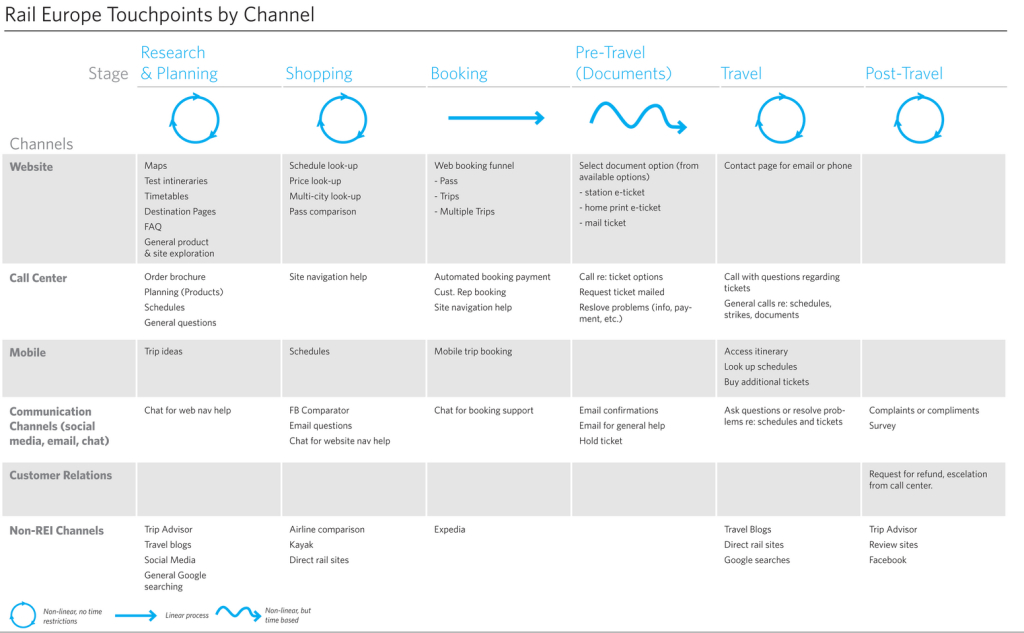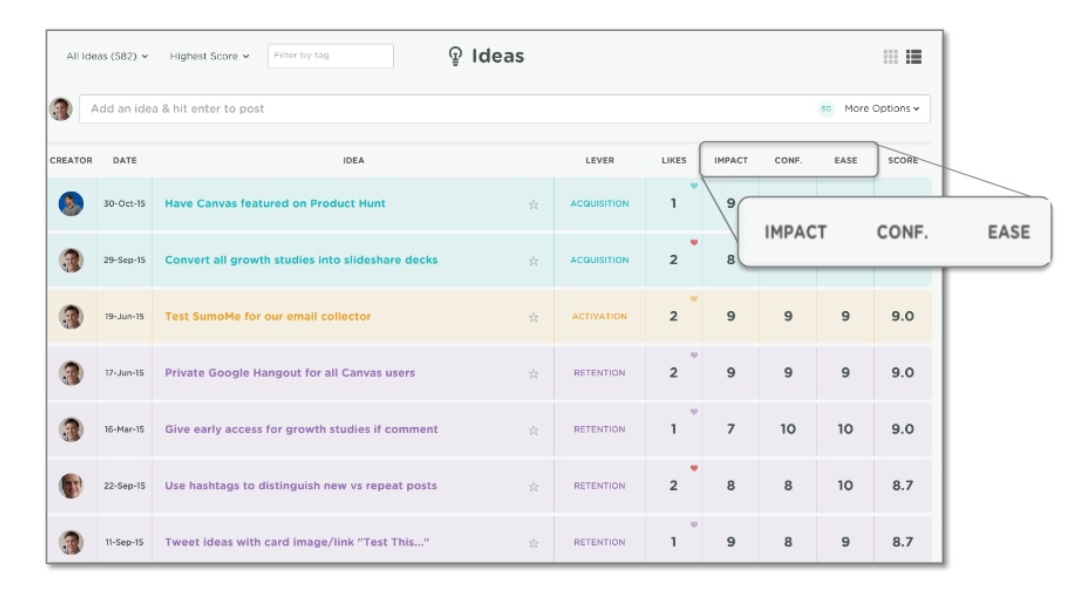This post discusses the Growth Marketing Foundations course as part of Track 1 (of 7) for the Growth Marketing program from the CXL Institute. It explores the wide landscape of descriptions for the practice of growth marketing, how it stacks up against other forms of marketing, and how to get started. The bulk of the course is taught by John McBride, Sr. Manager of Growth at Calm. Supplemental content comes from CXL Live events with Sean Ellis and Morgan Brown, which is equally informative to the primary material.
Growth marketing vs. traditional marketing.
Rather than comparing growth marketing to every known marketing practice (there are 41 and counting), it’s important to distinguish the core attribute that distinguishes growth marketing: EXPERIMENTATION!
Whereas traditional marketing approaches tend to roll with a single campaign idea, growth marketing is born of Silicon Valley and the Lean Startup Methodology, which wants to learn quickly and move on to the next test opportunity. The minimal viable approach not just to digital products but to marketing as a whole.
Growth marketers embrace that they don’t possess magical knowledge of what customers want. Rather, knowledge is learned through a constant process of creating hypotheses and rapidly testing to prove or disprove. Rinse and repeat. They believe they can learn as much from failures as they do successes.
Core attributes of a growth marketer.
T-shaped marketing is par for the course in growth marketing, which means expertise in just a few main marketing areas, but well-versed and capable across the broader marketing practice.

Image care of digitalmarketer.com
While the broad knowledge can stem into any area, coverage in analytics, strategic thinking, and some sort of channel expertise tends to best serve the needs of a growth team.
- Analytical Capability – Excel, SQL, Google Analytics, etc. (able to track data and answer experiments)
- Strategic Thinking – Leadership, project management, product management (able to prioritize a growth roadmap, capture customer journey, work cross-functionally, lead teams)
- Channel Expertise – Email, social, push, etc. (this is easier to learn than strategy or analytics)
The bottom line: You don’t need to be an analyst, but if you fundamentally suck at analytics then growth marketing probably isn’t for you. And if you lack a certain unrelenting curiosity, then perhaps a profession based on never-ending experimentation is not for you.
Build a growth marketing process.
While there are endless ways to create marketing processes for growth, a three-phased approach is recommended:
- MODELLING – Growth model, customer journey, channel priority
- PLANNING – Goals, roadmap, quarterly breakdown
- EXECUTING – Build tests, analyze, and scale or scrap
Defining your growth model.
Growth models are established based on company priorities. Is your company early-stage and focuses exclusively on user growth? More mature and laser-locked on revenue growth? Any form of a conceptual funnel model will work for growth marketing, but the most common is Venture Capitalist Dave McClure‘s Pirate Metrics (the AARRR funnel).

Dave McClure’s Pirate Metrics care of fourweekmba.com
Understanding your customer(s) journey.
Mapping the customer journey is a deep topic worth a stand-alone course, but for the purpose of understanding growth modeling, it’s really about defining all the possible ways customers might find out about your business, and interact with your products/services – all the way through the AARRR funnel. Do it one better, and embrace the burden of providing tangible customer value across that journey rather than just thinking of it as a business growth opportunity.
Mapping the customer journey defines which channels are important to them, and therefore equally important to your company. SEO, SEM, paid ads, content marketing, social, email… where you place your growth bets will begin by mapping the highest impact touchpoints on the journey.

Image care of cxl.com
The Golden Path is the “sequence of touchpoints, from brand discovery to sales won, that most customers take.” It can be an effective way to begin the daunting process of mapping, and it can also be applied to priorities like referral and retention (not just the base path of customer acquisition).
To stay focused, consider starting with a single customer persona (persona development will be examined in another course) and examine the golden path for just that one. Another way to stay on task is to look at only a single dimension (example: organic customer acquisition or referral customer acquisition). These are just a few examples to avoid ‘boiling the ocean’ when tackling journey mapping.
There are many options for customer journey mapping tools (I like InMoment, Visual Paradigm, and Smaply). But often the best way to tackle journey mapping is analog: a whiteboard and sticky notes.
Goal-setting for growth.
Each funnel section of AARRR contains subsets. It’s not enough to say ‘revenue’ is your goal. A simple term like revenue expands down into more nuanced goals like revenue per customer, # of customers who pay, and recurring revenue per customer.
The OKR (Objects and Key Results) process is a great fit for goal-setting within growth models, and standard practice across most progressive companies. A simple example is an organization Object of “Growth of monthly active users” (qualitative), with Key Result of “grow number of active users to 480K by end of Q2” (quantitative). Following an aligned downstream approach like OKR ensures that growth tests are based on measurable outcomes, always.
A few other tips related to goal-setting for growth:
- Search for true IMPACT. Where is the biggest area of opportunity for growth? Where in the funnel can you attack for real business impact? Lots of traffic but not converting? Conversion happening, but referrals not working? (If you lack the quantitative data to identify the impact, go to surveys for qualitative feedback from customers and solve their biggest pain points.)
- Goals should be highly motivating, but in a practical sense achievable. A baseline that can be hit 70-80 %. A stretch that might be a once a year accomplishment.
- While company goals are annual, your team/department goals (or downstream Key Outcomes) work best quarterly, and can even be broken into monthly outcomes.
- It’s common to see teams create specific AARRR OKRs, but for best results (especially new and/or small teams), pick a single top area (like ‘referral’) and work that as a focus for the quarter.
- Before looking for new ideas/concepts, first, try to squeeze every drop of growth out of what you have. Look for 1-2% improvements that are low effort to create cumulative impact. Once you feel you are getting diminishing returns, move to another topline, or pursue new ideas.
Involve your entire company in growth marketing.
Sophisticated growth marketing is about more than just landing pages and paid media funnels. Growth opportunities can come from any department in a business.
“Experiment-driven marketing focuses on how the product itself creates growth.” – Morgan Brown
Sean Ellis from GrowthHackers.com suggests anchoring to a single NORTH STAR goal to unify across development, marketing, product, sales, and anyone else in the organization – turning the whole organization into a growth team!
For North Stars, remember to leverage only those goals that reflect overall value to customers AND provide a lens for sustainable growth. Air BNB nights booked is one example. Uber completed trips is another.
Growth test prioritization.
Any fair and easy-to-use grading system will suffice for the prioritization of tests in growth planning, but ICE (Impact, Confidence, Effort) is a common framework. ICE scores make it easy to compare one idea against another without unnecessary inputs.

If you can, do a weekly cross-functional ‘pitch’ meeting, where people nominate ideas in advance through a submission tool, then represent the ideas themselves. The group can then use ICE to evaluate and decide what tests to run. A few tips on these meetings:
- DO NOT CALL THESE BRAINSTORM MEETINGS! Call them ‘Prioritization Sessions’ or whatever you like, but do not let them devolve into brain dumps. These meetings are for alignment.
- If you want to pursue brainstorms, do them separately and contain them to a specific area like competitor analysis, personalization, or one area from AARRR.
- Have these meetings every week, not just as needed. It’s more like an agile sprint product meeting.
- The Growth Team lead should own and run these meetings (ideally using the North Star and OKRs as agenda).
- Dollarize your impact in ICE. Either saved or earned hard dollars. (Sometimes cash becomes a tie-breaker with competing interests at play across an organization.)
Designing growth marketing tests.
This Growth Marketing mini degree has a separate course on designing and running growth experiments. As such, we won’t go into detail here. Just remember that $h!t in $h!t out applies heavily to how you think of experiments. These are not random creative marketing activations. These are tests against a theoretical impact on a specific goal: they must be evidence-based, testable, and defensible.
- Experiment Design
- Goal-base, clear hypothesis, testable.
- Experiment Deployment
- On-time and aligned with experiment design.
- Experiment Analysis
- Review against the key metrics that were established.
- Experiment Decision
- Scale into a larger experiment, or tabulate learnings and kill.
Design your own test template documentation or lean on companies like Airtable for their growth marketing experiment templates.
Some final experiment design tips.
- Learn SOMETHING on every single test.
- Give up on inconclusive tests… there are always better opportunities.
- Learnings MUST be clear and must be accessible to everyone.
- Use managed services (like Optimizely) for efficiency.
- To kickstart growth and/or ensure momentum, make sure to run at least three tests per week. Fast tempo = more learning. More learning = more growth. Over a year, uptempo may result in 30% or more opportunities to grow.
Send your suggestions for Growth Marketing resources to .
